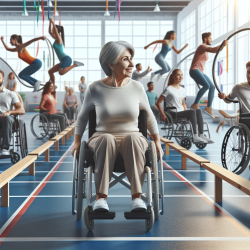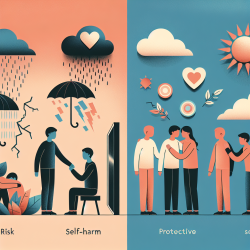Introduction: A New Era in Wheelchair Training
In the realm of rehabilitation, the need for innovative and effective training programs for manual wheelchair (MWC) users, especially older adults, is paramount. A recent study explored the feasibility of a community-based, peer-led wheelchair training program, Wheelchair training Self-Efficacy Enhanced for Use (WheelSeeU), and its potential to improve outcomes for older adults. This blog will delve into the study's findings and how practitioners can leverage these insights to enhance their practice.
The Study: Peer-Led Wheelchair Training
The study involved 40 MWC users, with an average age of 65, who were randomly assigned to either the experimental WheelSeeU group or a control group. The feasibility indicators assessed included process, resources, management, and safety. Remarkably, the study achieved a 49% consent rate, a 90% participant retention rate post-intervention, and an 87.5% retention rate at follow-up. Participants reported significant perceived benefits, and adherence to the study protocol was over 90%.
Key Findings: What Practitioners Should Know
- High Retention and Satisfaction: The high retention rate and positive feedback underscore the program's potential for broader implementation.
- Peer-Led Benefits: The peer-led model not only enhances self-efficacy but also reduces the burden on clinicians, making it a sustainable option for community-based training.
- Safety and Efficacy: No adverse events were reported, indicating that the program is both safe and effective.
Implementing WheelSeeU in Practice
For practitioners looking to adopt the WheelSeeU model, consider the following steps:
- Recruitment and Training: Identify and train peer-trainers who have significant wheelchair experience and the ability to connect with participants.
- Goal Setting: Use the SMART goal framework to tailor sessions to individual participant needs, enhancing motivation and outcomes.
- Community Integration: Facilitate sessions that mimic real-world challenges to improve participants' confidence and skills in everyday settings.
Encouraging Further Research
While the study provides a solid foundation, further research is needed to explore the long-term impacts of peer-led training on wheelchair skills and self-efficacy. Practitioners are encouraged to contribute to this growing body of knowledge by implementing and evaluating the WheelSeeU model in diverse settings.
Conclusion: A Path Forward
The WheelSeeU program represents a promising shift towards more effective, sustainable wheelchair training for older adults. By adopting this peer-led approach, practitioners can significantly enhance the quality of life for their clients, fostering greater independence and confidence.
To read the original research paper, please follow this link: Feasibility of the trial procedures for a randomized controlled trial of a community-based peer-led wheelchair training program for older adults.










